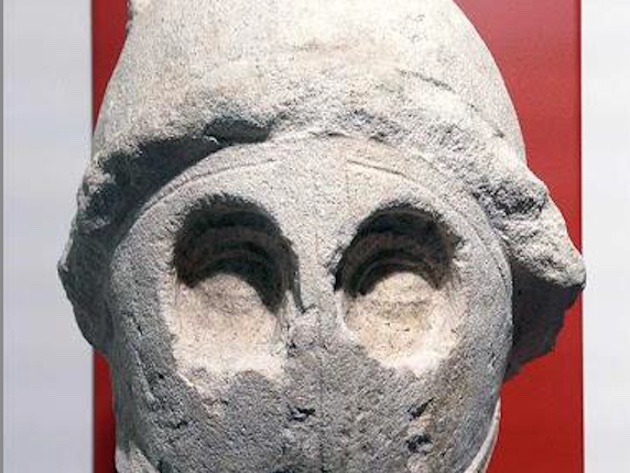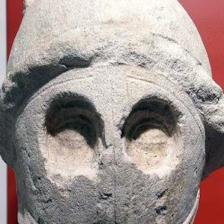
From 10 April to 15 October, the Colosseum Hypogea, in the new permanent exhibition dedicated to Shows in the Arena, will host the extraordinary stone head of a gladiator from the beginning of the 1st century AD, coming from the Verona Amphitheatre from the first half of the 1st century AD (the so-called Arena), thanks to the loan guaranteed by the Archaeological Museum at the Roman Theatre of Verona.
The sculpture is part of the tour curated by Alfonsina Russo, Federica Rinaldi and Barbara Nazzaro, contributing to broadening knowledge of the world of gladiators and their complex organization. The stone head most likely belongs to the Gallus fighter typology, that is, to that category of gladiators who, like the Samnite and the Thracian, originate from the geographical origin of the peoples traditionally enemies of Rome.
The presence of this find contributes to enriching the visit itinerary, especially with regards to the different typologies of gladiators, their armour, as well as their origin and their evolution over time, especially after the reform introduced by Augustus.
In particular, the stone head from Verona is added to the existing installation which already includes the evocative holographic projection - created by Katatexilux based on an idea by Federica Rinaldi - with gladiators advancing from the darkness of the eastern cryptoporticus, the black and white mosaic from the 2nd century AD with a hunting scene, the steps of the cavea with graffiti reproducing gladiator fights and animal chases, the oil lamps, the models of freight elevators and the systems for lifting men and animals, technological devices ante litteram.
All these finds are placed next to the life-size reproductions of the gladiator armour in the various typologies of retiarius, secutor, trace, mirmillone, provocator and oplomachus, already part of the PArCo collection.
With the arrival of the find from the Verona Arena, the Colosseum archaeological Park confirms its desire to host every year in rotation a find from those museums and places of culture of the national museum system, capable of offering a contribution to the history of gladiators in the ancient world.
From July 2023 to February 2024, in fact, the exhibition was enriched by the original helmets from the Gladiator Barracks of Pompeii, preserved at the National Archaeological Museum of Naples.
Furthermore, from June 2024 to February 2025, the J.J. Winckelmann Museum of Antiquities in Trieste had guaranteed the loan of the relief from the island of Kos with the depiction of the fight between a retiarius and a secutor and an inscription in Greek that most likely leads back to the dissolution of the contractual bond of the auctoramentum, the sacrament to the divinity with which the gladiator agreed to risk his life by going down into the arena and fighting until the people's judgment: today, visitors to the Colosseum can continue to admire the story contained in this relief thanks to a copy created from a digital model made with a high-precision 3D laser scanner.
At the same time, to further strengthen the bond between the two amphitheatres, the Colosseum archaeological Park has accepted the request to lend the Verona Museum a marble slab with the head of a gladiator without a helmet and therefore probably recognisable with a retiarius, also identified by the name Delicatus, which will be exhibited in the section dedicated to the Arena in the Archaeological Museum at the Roman Theatre, with an exhibition project curated by Francesca Morandini.
During the loan period, to make this reciprocity operational, conferences and workshops are scheduled between June and September to be held between Verona and Rome on issues concerning the management, enhancement and accessibility of the two Arenas.
Photo: Stone head of a gladiator from the beginning of the 1st century AD, Verona Amphitheatre
 Condividi
Condividi












































